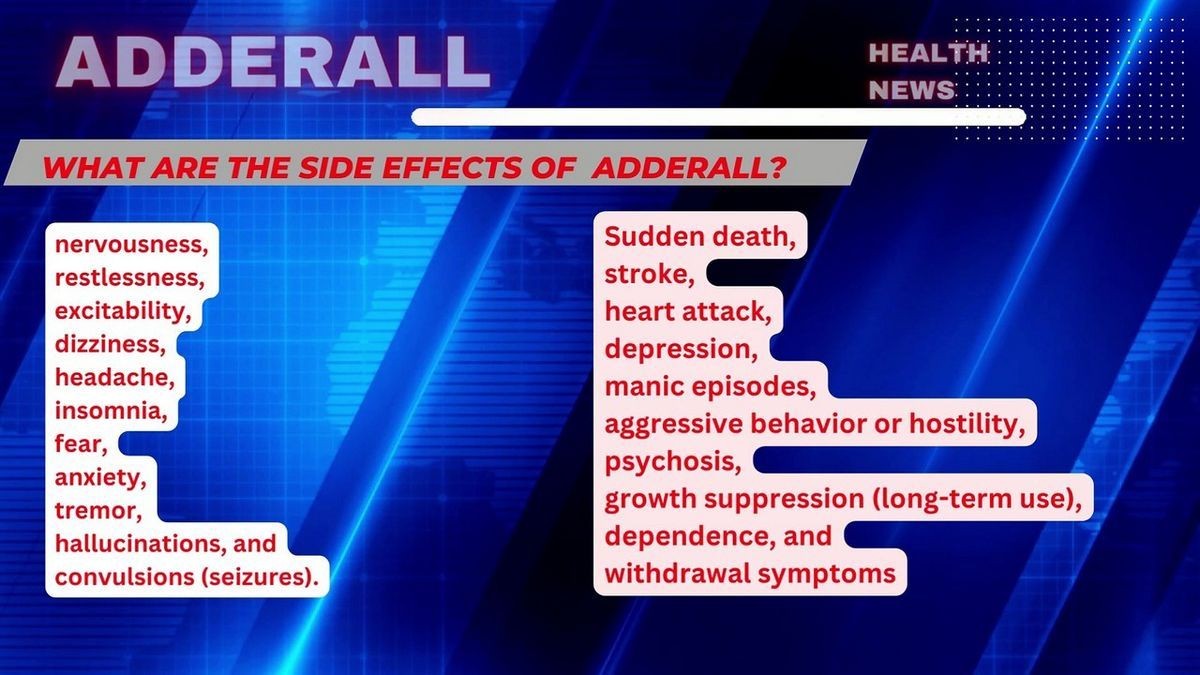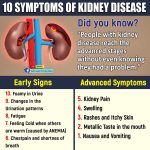
Contents
- 1 Side Effects of Adderall (amphetamine and dextroamphetamine)
- 1.0.1 What are the side effects of Adderall?
- 1.0.2 Is Adderall addictive?
- 1.0.3 What drugs interact with Adderall?
- 1.0.3.1 Acidifying Agents
- 1.0.3.2 Adrenergic Blockers
- 1.0.3.3 Alkalinizing Agents
- 1.0.3.4 Tricyclic Antidepressants
- 1.0.3.5 CYP2D6 Inhibitors
- 1.0.3.6 Serotonergic Drugs
- 1.0.3.7 MAO Inhibitors
- 1.0.3.7.1 Antihistamines
- 1.0.3.7.2 Antihypertensives
- 1.0.3.7.3 Chlorpromazine
- 1.0.3.7.4 Ethosuximide
- 1.0.3.7.5 Haloperidol
- 1.0.3.7.6 Lithium Carbonate
- 1.0.3.7.7 Meperidine
- 1.0.3.7.8 Methenamine Therapy
- 1.0.3.7.9 Norepinephrine
- 1.0.3.7.10 Phenobarbital
- 1.0.3.7.11 Phenytoin
- 1.0.3.7.12 Propoxyphene
- 1.0.3.7.13 Proton Pump Inhibitors
- 1.0.3.7.14 Veratrum Alkaloids
- 1.0.3.8 Drug/Laboratory Test Interactions
- 1.0.4 Adderall side effects list for healthcare professionals
- 1.0.5 Summary
Side Effects of Adderall (amphetamine and dextroamphetamine)
Adderall (amphetamine and dextroamphetamine) is an amphetamine used to treat attention-deficit hyperactivity disorder (ADHD) and narcolepsy. Adderall XR is an extended release form of Adderall.
Common side effects of Adderall include:
- nervousness,
- restlessness,
- excitability,
- dizziness,
- headache,
- insomnia,
- fear,
- anxiety,
- tremors,
- increased blood pressure and heart rate,
- palpitations,
- hallucinations,
- and convulsions (seizures).
Serious side effects of Adderall include:
- sudden death,
- stroke,
- heart attack,
- depression,
- manic episodes,
- aggressive behavior or hostility,
- psychosis,
- growth suppression (long-term use),
- priapism (painful and/or nonpainful penile erection lasting more than 4 hours),
- dependence,
- and withdrawal symptoms.
Do not use amphetamines such as Adderall during pregnancy. Infants born to mothers dependent on amphetamines exhibit withdrawal symptoms and have an increased risk of low birth weight. Mothers taking amphetamines such as Adderall should refrain from breastfeeding as the drugs are excreted in human milk and can have undesirable effects on the child.
What are the side effects of Adderall?
Side effects of amphetamines include excessive stimulation of the nervous system resulting in:
- nervousness,
- restlessness,
- excitability,
- dizziness,
- headache,
- insomnia,
- fear,
- anxiety,
- tremor,
- hallucinations, and
- convulsions (seizures).
Blood pressure and heart rate may increase, and patients may experience palpitations.
Other important side effects include:
- Sudden death,
- stroke,
- heart attack,
- depression,
- manic episodes,
- aggressive behavior or hostility,
- psychosis,
- growth suppression (long-term use),
- dependence,
- and withdrawal symptoms
Priapism, defined as painful and nonpainful penile erection lasting more than 4 hours, has been reported in pediatric and adult patients treated with stimulants. The erection usually resolves when the drug is stopped. Prompt medical attention is required if priapism is suspected.
Is Adderall addictive?
Adderall (Dextroamphetamine Saccharate, Amphetamine Aspartate, Dextroamphetamine Sulfate and Amphetamine Sulfate Tablets) is a Schedule II controlled substance.
Amphetamines have been extensively abused. Tolerance, extreme psychological dependence, and severe social disability have occurred.
There are reports of patients who have increased the dosage to levels many times higher than recommended.
Abrupt cessation following prolonged high dosage administration results in extreme fatigue and mental depression; changes are also noted on the sleep EEG.
Manifestations of chronic intoxication with amphetamines include:
- severe dermatoses,
- marked insomnia,
- irritability,
- hyperactivity,
- and personality changes.
The most severe manifestation of chronic intoxication is psychosis, often clinically indistinguishable from schizophrenia.
What drugs interact with Adderall?
Acidifying Agents
Lower blood levels and efficacy of amphetamines. Increase dose based on clinical response. Examples of acidifying agents include gastrointestinal acidifying agents (e.g., guanethidine, reserpine, glutamic acid HCl, ascorbic acid) and urinary acidifying agents (e.g., ammonium chloride, sodium acid phosphate, methenamine salts).
Adrenergic Blockers
Adrenergic blockers are inhibited by amphetamines.
Alkalinizing Agents
Increase blood levels and potentiate the action of amphetamine. Co-administration of Adderall® and gastrointestinal alkalinizing agents should be avoided. Examples of alkalinizing agents include gastrointestinal alkalinizing agents (e.g., sodium bicarbonate) and urinary alkalinizing agents (e.g. acetazolamide, some thiazides).
Tricyclic Antidepressants
May enhance the activity of tricyclic or sympathomimetic agents causing striking and sustained increases in the concentration of d-amphetamine in the brain; cardiovascular effects can be potentiated. Monitor frequently and adjust or use alternative therapy based on clinical response. Examples of tricyclic antidepressants include desipramine, protriptyline.
CYP2D6 Inhibitors
The concomitant use of Adderall® and CYP2D6 inhibitors may increase the exposure of Adderall® compared to the use of the drug alone and increase the risk of serotonin syndrome. Initiate with lower doses and monitor patients for signs and symptoms of serotonin syndrome particularly during Adderall® initiation and after a dosage increase. If serotonin syndrome occurs, discontinue Adderall® and the CYP2D6 inhibitor. Examples of CYP2D6 Inhibitors include paroxetine and fluoxetine (also serotonergic drugs), quinidine, ritonavir.
Serotonergic Drugs
The concomitant use of Adderall® and serotonergic drugs increases the risk of serotonin syndrome. Initiate with lower doses and monitor patients for signs and symptoms of serotonin syndrome, particularly during Adderall® initiation or dosage increase. If serotonin syndrome occurs, discontinue Adderall® and the concomitant serotonergic drug(s). Examples of serotonergic drugs include selective serotonin reuptake inhibitors (SSRI), serotonin norepinephrine reuptake inhibitors (SNRI), triptans, tricyclic antidepressants, fentanyl, lithium, tramadol, tryptophan, buspirone, St. John’s Wort.
MAO Inhibitors
Concomitant use of MAOIs and CNS stimulants can cause hypertensive crisis. Potential outcomes include death, stroke, myocardial infarction, aortic dissection, ophthalmological complications, eclampsia, pulmonary edema, and renal failure. Do not administer Adderall® concomitantly or within 14 days after discontinuing MAOI. Examples of MAOIs include selegiline, tranylcypromine, isocarboxazid, phenelzine, linezolid, methylene blue.
Antihistamines
Amphetamines may counteract the sedative effect of antihistamines.
Antihypertensives
Amphetamines may antagonize the hypotensive effects of antihypertensives.
Chlorpromazine
Chlorpromazine blocks dopamine and norepinephrine receptors, thus inhibiting the central stimulant effects of amphetamines, and can be used to treat amphetamine poisoning.
Ethosuximide
Amphetamines may delay intestinal absorption of ethosuximide.
Haloperidol
Haloperidol blocks dopamine receptors, thus inhibiting the central stimulant effects of amphetamines.
Lithium Carbonate
The anorectic and stimulatory effects of amphetamines may be inhibited by lithium carbonate.
Meperidine
Amphetamines potentiate the analgesic effect of meperidine.
Methenamine Therapy
Urinary excretion of amphetamines is increased, and efficacy is reduced, by acidifying agents used in methenamine therapy.
Norepinephrine
Amphetamines enhance the adrenergic effect of norepinephrine.
Phenobarbital
Amphetamines may delay intestinal absorption of phenobarbital; coadministration of phenobarbital may produce a synergistic anticonvulsant action.
Phenytoin
Amphetamines may delay intestinal absorption of phenytoin; coadministration of phenytoin may produce a synergistic anticonvulsant action.
Propoxyphene
In cases of propoxyphene overdosage, amphetamine CNS stimulation is potentiated and fatal convulsions can occur.
Proton Pump Inhibitors
Time to maximum concentration (Tmax) of amphetamine is decreased compared to when administered alone. Monitor patients for changes in clinical effect and adjust therapy based on clinical response. An example of a proton pump inhibitor is omeprazole.
Veratrum Alkaloids
Amphetamines inhibit the hypotensive effect of veratrum alkaloids.
Drug/Laboratory Test Interactions
Amphetamines can cause a significant elevation in plasma corticosteroid levels. This increase is greatest in the evening. Amphetamines may interfere with urinary steroid determinations.
Adderall side effects list for healthcare professionals
Cardiovascular
- Palpitations,
- tachycardia,
- elevation of blood pressure,
- sudden death,
- myocardial infarction.
There have been isolated reports of cardiomyopathy associated with chronic amphetamine use.
Central Nervous System
- Psychotic episodes at recommended doses,
- overstimulation,
- restlessness,
- irritability,
- euphoria,
- dyskinesia,
- dysphoria,
- depression,
- tremor,
- tics,
- aggression,
- anger,
- logorrhea,
- dermatillomania.
Eye Disorders
- Vision blurred,
- mydriasis.
Gastrointestinal
- Dryness of the mouth,
- unpleasant taste,
- diarrhea,
- constipation,
- other gastrointestinal disturbances.
Anorexia and weight loss may occur as undesirable effects.
Allergic
- Urticaria,
- rash,
- hypersensitivity reactions including angioedema and anaphylaxis.
- Serious skin rashes, including Stevens-Johnson syndrome and toxic epidermal necrolysis have been reported.
Endocrine
- Impotence,
- changes in libido,
- frequent or prolonged erections.
Skin
Musculoskeletal
Summary
Adderall (amphetamine and dextroamphetamine) is an amphetamine used to treat attention-deficit hyperactivity disorder (ADHD) and narcolepsy. Adderall XR is an extended release form of Adderall. Common side effects of Adderall include nervousness, restlessness, excitability, dizziness, headache, insomnia, fear, anxiety, tremors, increased blood pressure and heart rate, palpitations, hallucinations, and convulsions (seizures). Do not use amphetamines such as Adderall during pregnancy. Infants born to mothers dependent on amphetamines exhibit withdrawal symptoms and have an increased risk of low birth weight. Mothers taking amphetamines such as Adderall should refrain from breastfeeding as the drugs are excreted in human milk and can have undesirable effects on the child.


